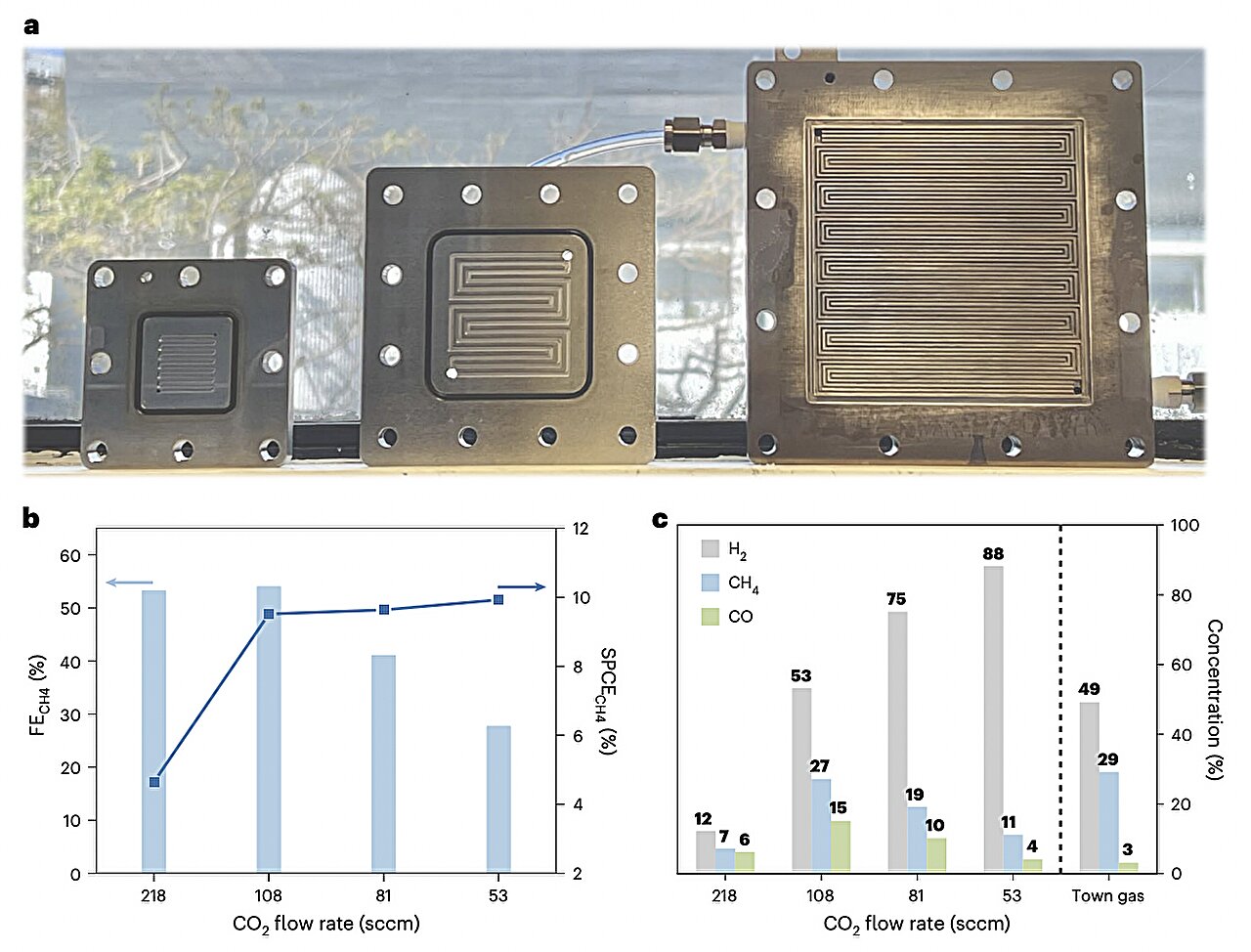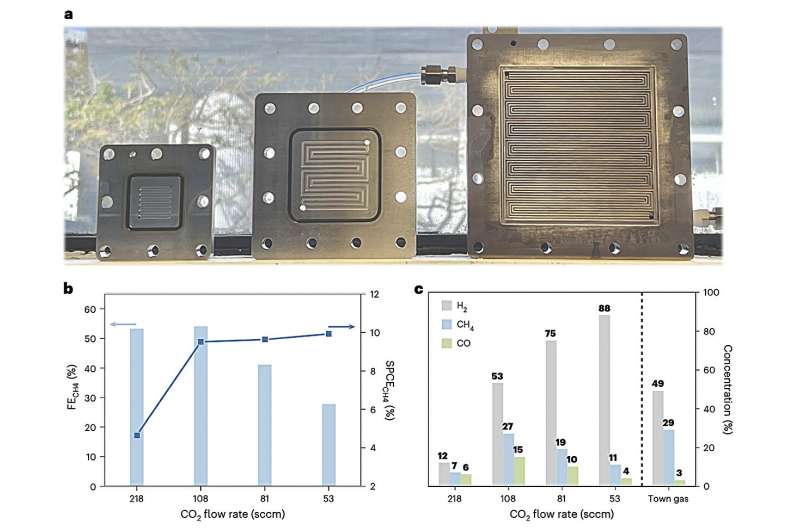

The efficient conversion of carbon dioxide (CO2)—one of the main compounds contributing to climate change—into useful fuels and chemicals is a long sought-after research goal. Recent studies have introduced various catalysts that could be used to initiate the so-called electrochemical CO2 reduction reaction in electrolyzers (i.e., devices that drive specific chemical reactions using electricity).
The CO2 reduction reaction is the chemical process via which CO2 molecules are reduced, ultimately forming other chemicals or fuels. Most of the catalysts previously employed to initiate this reaction in electrolyzers are metallic, such as copper, silver and gold.
Metal-based catalysts, however, often exhibit a limited tunability, which means that leveraging them to precisely reduce CO2 into specific chemical products can be challenging. Some studies have thus been assessing the potential of alternative non-metallic catalysts for converting CO2 into desirable fuels and chemicals.
Researchers at the Chinese University of Hong Kong, University of Auckland and National Yang Ming Chiao Tung University recently introduced a new promising triazole molecular catalyst for the efficient electrochemical reduction of CO2 into methane (CH4). A preliminary system utilizing this catalyst, presented in a paper published in Nature Energy, was found to reliably convert CO2 into CH4, exhibiting both good efficiency and turnover frequency.
“Organic molecular catalysts, which are more acutely tunable than metal catalysts, are still unable to catalyze CO2 to hydrocarbons under industrially relevant current densities for long-term operation, and the catalytic mechanism is still elusive,” Zhanyou Xu, Ruihu Lu and their colleagues wrote in their paper. “We report 3,5-diamino-1,2,4-triazole-based membrane electrode assemblies for CO2-to-CH4 conversion with Faradaic efficiency of (52 ± 4)% and turnover frequency of 23,060 h−1 at 250 mA cm−2.”
The researchers devised an initial system for reducing CO2 using their triazole molecule-based catalyst and explored its performance in a series of tests, where they ran it at a current of 10A for 10 hours of electrolysis. Their findings were highly promising and offered them valuable insight into the process through which their system converted CO2 into CH4.
“Our mechanistic studies suggest that the CO2 reduction at the 3,5-diamino-1,2,4-triazole electrode proceeds through the intermediary *CO2–*COOH–*C(OH)2–*COH to produce CH4 due to the spatially distributed active sites and the suitable energy level of the molecular orbitals,” wrote Xu, Lu and their colleagues. “A pilot system operated under a total current of 10 A (current density = 123 mA cm−2) for 10 h is able to produce CH4 at a rate of 23.0 mmol h−1.”
Overall, the findings of this recent study highlight the potential of triazole molecular catalysts for enabling the scalable and selective electroreduction of CO2. The promising catalyst they identified, namely 3,5-diamino-1,2,4-triazole (DAT), could soon be studied and evaluated further by other research teams, or could inspire the design of similar catalysts for converting CO2 into other useful chemicals.
More information:
Zhanyou Xu et al, Electroreduction of CO2 to methane with triazole molecular catalysts, Nature Energy (2024). DOI: 10.1038/s41560-024-01645-0.
© 2024 Science X Network
Citation:
Promising triazole molecular catalyst enables efficient electroreduction of carbon dioxide to methane (2024, October 22)
retrieved 22 October 2024
from https://phys.org/news/2024-10-triazole-molecular-catalyst-enables-efficient.html
This document is subject to copyright. Apart from any fair dealing for the purpose of private study or research, no
part may be reproduced without the written permission. The content is provided for information purposes only.